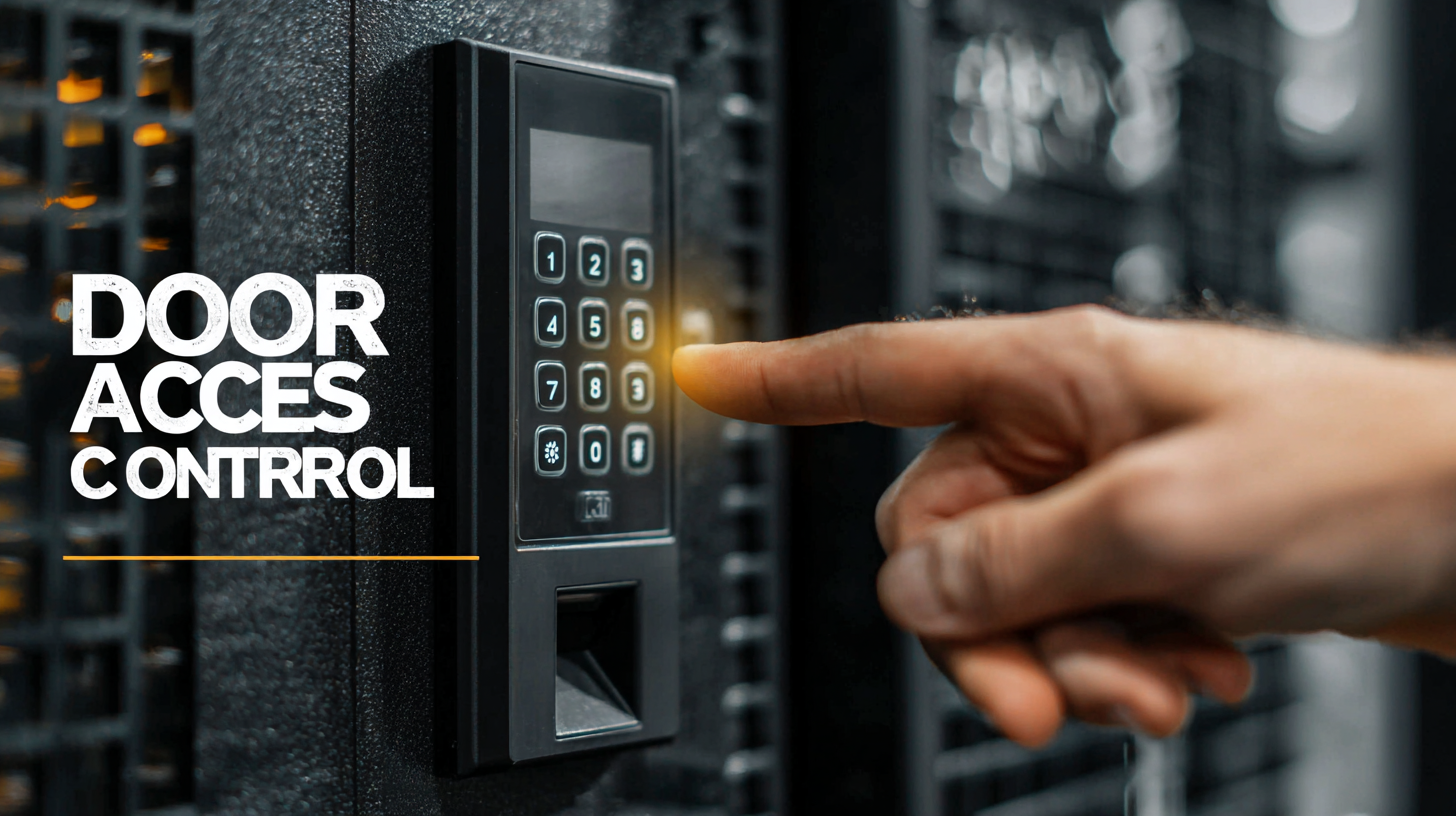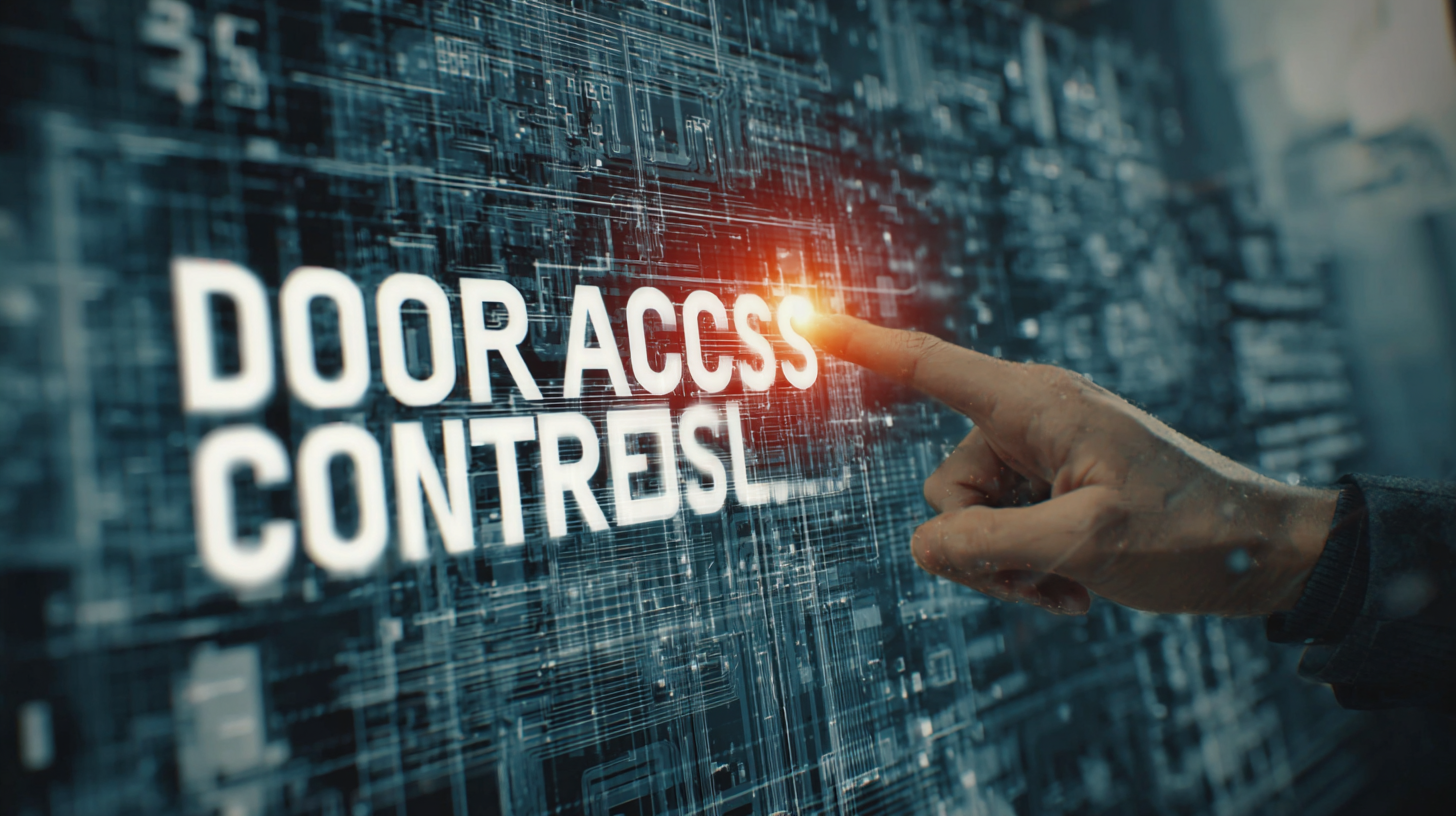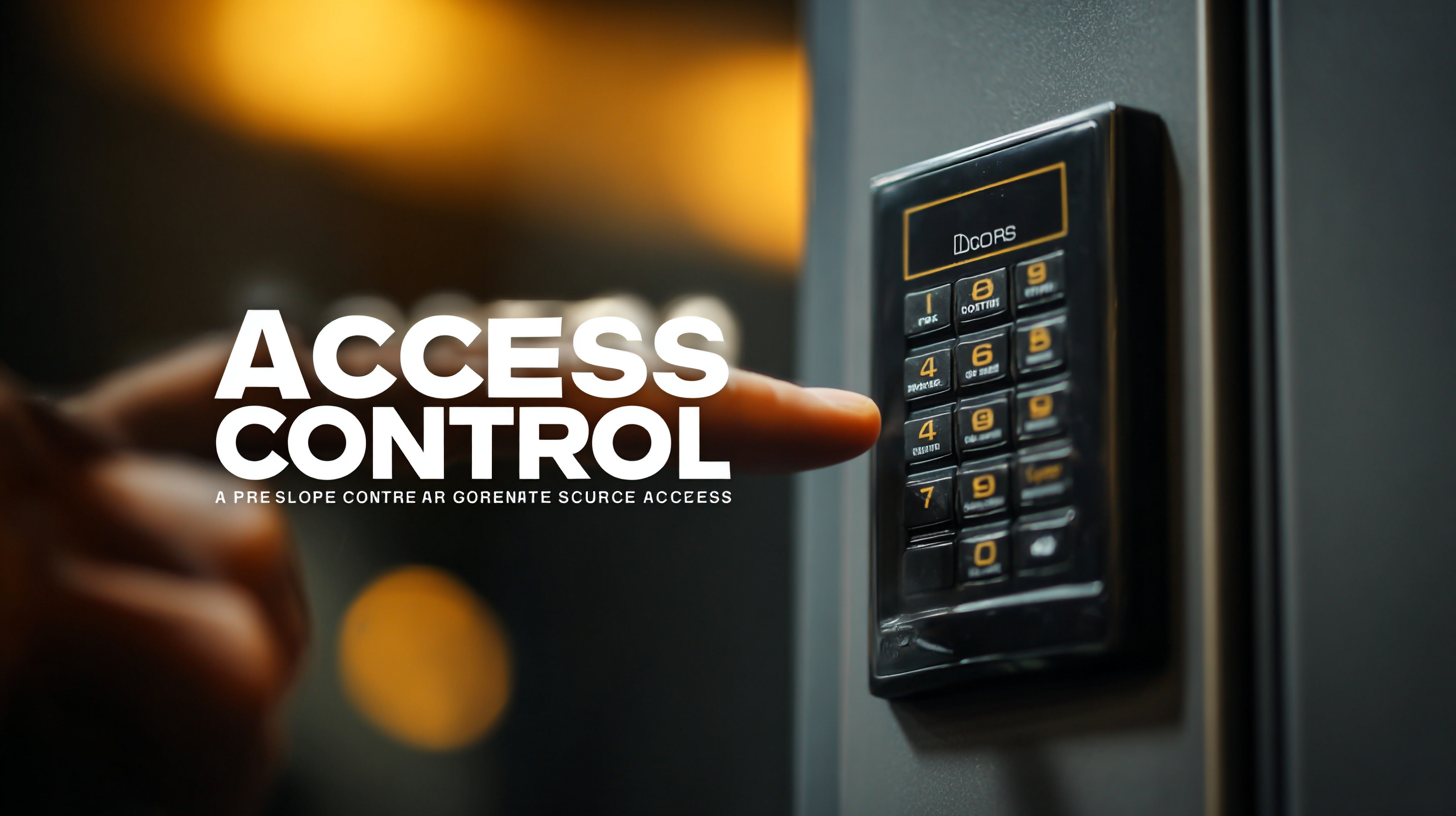Blog
Ultimate Guide to Best Door Access Control Solutions for Global Procurement Success
 In the fast-evolving landscape of global procurement, ensuring the security and accessibility of facilities is more crucial than ever. One of the most effective ways to achieve this is through modern Door Access Control solutions. These systems not only enhance safety by managing who can enter specific areas but also streamline operations by integrating digital technologies that allow for remote monitoring and management. From biometric authentication to cloud-based access management, the variety of options available can cater to diverse organizational needs.
In the fast-evolving landscape of global procurement, ensuring the security and accessibility of facilities is more crucial than ever. One of the most effective ways to achieve this is through modern Door Access Control solutions. These systems not only enhance safety by managing who can enter specific areas but also streamline operations by integrating digital technologies that allow for remote monitoring and management. From biometric authentication to cloud-based access management, the variety of options available can cater to diverse organizational needs.
This ultimate guide explores the best Door Access Control solutions, highlighting top technologies and innovations that drive procurement success across industries. Join us as we delve into the transformative potential of these systems, equipping your organization with the knowledge to make informed decisions for a secure future.
Benefits of After-Sales Service in Door Access Control Solutions
 After-sales service plays a pivotal role in the effectiveness and longevity of door access control solutions. These systems are crucial for safeguarding premises, and their reliability can significantly impact security operations. The benefits of comprehensive after-sales support extend far beyond warranty repairs; they encompass routine maintenance, software updates, and prompt assistance for troubleshooting. This continuous support ensures that access control systems are always functioning optimally, thereby reducing potential security breaches and downtime.
After-sales service plays a pivotal role in the effectiveness and longevity of door access control solutions. These systems are crucial for safeguarding premises, and their reliability can significantly impact security operations. The benefits of comprehensive after-sales support extend far beyond warranty repairs; they encompass routine maintenance, software updates, and prompt assistance for troubleshooting. This continuous support ensures that access control systems are always functioning optimally, thereby reducing potential security breaches and downtime.
Moreover, effective after-sales service fosters a robust relationship between providers and clients. When customers know they can rely on their service provider for ongoing support, it enhances their overall satisfaction and loyalty. Quick response times to service requests can differentiate a provider in the competitive landscape of access control solutions. Additionally, regular training and updates provided by the service team empower users, enabling them to maximize the functionality of their systems. By investing in after-sales services, companies not only protect their assets but also enhance operational efficiency, driving global procurement success in the long run.
Understanding Repair Costs in Access Control Systems
When considering repair costs in access control systems, it's crucial to understand the various factors that contribute to ongoing expenses. Maintenance and repair are essential to ensure that the systems, whether biometric or non-biometric, operate seamlessly. Systems that utilize advanced technologies such as RFID, Bluetooth, and NFC may require specialized expertise, which can escalate repair costs. Additionally, aging equipment often demands more frequent repairs, making it vital for organizations to evaluate whether to invest in legacy systems or upgrade to newer solutions.
Furthermore, organizations should consider the cost implications of vehicle access control, as its market is projected to grow significantly over the coming years. Investing in modern access control technology not only enhances security for personnel and assets but can also lead to reduced long-term maintenance costs. By analyzing the lifecycle of these access control systems and factoring in potential repair costs alongside initial investment, businesses can strategically plan for a sustainable and cost-effective procurement strategy.

Enhancing Procurement Success Through Effective Maintenance Strategies
In today's competitive landscape, effective maintenance strategies play a pivotal role in achieving procurement success, especially when it comes to door access control solutions. Organizations must not only invest in top-notch technology but also implement well-structured maintenance protocols to ensure optimal functionality. Regular maintenance checks can prevent unexpected breakdowns and extend the lifespan of access control systems, ultimately safeguarding the organization's investment and enhancing security measures.
Moreover, actively involving procurement teams in the maintenance planning process fosters collaboration between departments. By integrating maintenance schedules with procurement timelines, organizations can streamline their operations and minimize downtime. This proactive approach not only improves operational efficiency but also enhances the overall user experience for both employees and visitors. In essence, prioritizing maintenance as part of the procurement strategy not only protects assets but also contributes to a more resilient and responsive security framework across the organization.
Ultimate Guide to Best Door Access Control Solutions for Global Procurement Success
| Solution Type | Features | Maintenance Requirements | Cost Range | Scalability |
|---|---|---|---|---|
| Biometric Systems | Fingerprint/Facial Recognition | Regular software updates, physical cleaning | $500 - $2,000 | High |
| Card Access Systems | Magnetic stripe/Smart cards | Card replacement, software updates | $200 - $1,500 | Medium |
| Keypad Systems | Numeric keypads, user codes | Code management, battery replacement | $100 - $800 | Low |
| Mobile Access Control | Smartphone integration, Bluetooth | App updates, user management | $300 - $1,800 | High |
| Intercom Systems | Video/audio communication, remote access | Connection testing, firmware updates | $150 - $1,200 | Medium |
Comparative Analysis: After-Sales Support Features Across Leading Brands
When evaluating after-sales support features across leading door access control solutions, it's essential to consider how these attributes directly enhance procurement success on a global scale. A recent report highlights that over 70% of consumers prioritize service quality post-purchase, which significantly impacts their loyalty and overall satisfaction. This indicates that brands must go beyond merely providing a product; they need to offer robust customer support. For instance, companies that invest in comprehensive training and 24/7 technical support see increases in customer retention rates by approximately 60%, underscoring the advantage of prioritizing after-sales service.
Moreover, the comparative analysis of features like warranty periods, response times, and available resources reveals critical insights into consumer preferences. A survey conducted among procurement managers found that 85% believe that superior after-sales support is a deciding factor when selecting a supplier. Utilizing competitor analysis tools can help brands benchmark their performance against peers in this space. By embracing a data-driven approach to monitor public sentiment and customer feedback, companies can refine their service offerings, ensuring they not only meet but exceed the expectations of their clientele in a competitive landscape.
After-Sales Support Features Comparison for Door Access Control Solutions
Strategies for Reducing Long-Term Maintenance Expenses in Access Control
Reducing long-term maintenance expenses in access control systems is crucial for organizations looking to optimize their procurement budgets. According to a report by MarketsandMarkets, the global access control market is projected to reach $10.14 billion by 2025, highlighting the rapid growth and importance of efficient management strategies. One of the most significant strategies for minimizing maintenance costs involves selecting scalable and future-proof technologies. By investing in systems that easily integrate with emerging technologies such as mobile access and cloud-based solutions, organizations can avoid costly upgrades and replacements, ultimately leading to significant savings.
Additionally, regular training and development for staff responsible for managing access control systems can lead to reduced maintenance expenses. A survey conducted by SecurityInfoWatch revealed that organizations frequently underestimate the impact of operator error on system performance. By providing comprehensive training and resources, companies not only enhance the efficacy of their access control systems but also decrease the likelihood of costly downtime and repairs caused by human error. Implementing such proactive strategies ensures that businesses remain agile, adapting to new security challenges while keeping maintenance costs under control.
